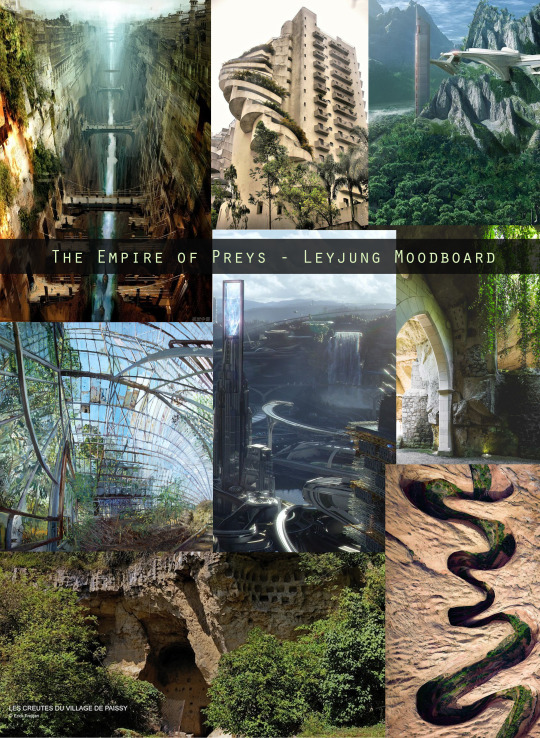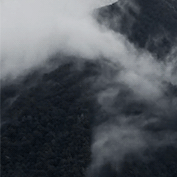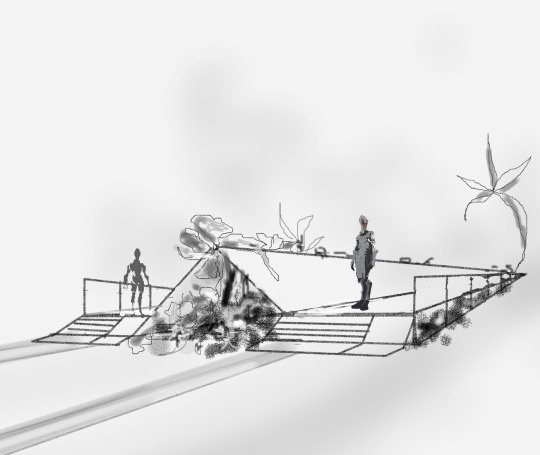#thank you for the aaask!! I have more but I think that's a fun first overview
Explore tagged Tumblr posts
Note
You said you're excited to spend more time on Sur'Kesh in Empire of Preys, and I'm excited for that too! We only got to spend like a minute on Sur'Kesh in canon, and I've always wished that we'd gotten to see more of that world. What do you imagine salarian architecture and design sensibilities as being like? I won't ask you to spoil the story, but I'm curious about any worldbuilding you've done along those lines that you'd like to share!
HELLO!!
Sorry for taking so long to reply to this wonderful ask! I kind of pondered a lot on what to talk about and how much I should talk about; but since you focused on architecture, I think I'll focus on that!
So, in The Empire of Preys, we spend most of our time (barred from one scene that takes place in a more remote city) in the country of Nkoma. What we call country and what salarians call country differs slightly, however: think of it more as an administrative district that exists more for the sake of resource repartition and ease of organization at a medium scale rather than a place, or an identity with strong cultural attachments that would involve nationalism or things like this --this would be much more true for cities (a practice encouraged and mirror by asaris) and clans in general.
There are two main focuses in Nkoma.
The first one is the city of Talat, considered a hotspot of diplomacy (where the administrative body called the Grand Symposium has its seat --basically where the Salarian Union is being ruled), business and tourism that spreads from the remnants of an old volcano all the way to the seaside coast. Its main landmark is a huge water dam used to control the level of the internal lake, assist with irrigation of the agricultural activity spreading around the city, and also partially turned into a luxury hotel. It's also the city that looks the most like the Citadel, Thessia, Armali, and every huge metropolis in the galaxy: it has tons of immigration and is the most overtly capitalist, with the least amount of relics from their past that isn't directly turned into museums.
The second is the city of Leyjung, which is Nkoma's second biggest city (and the biggest focus of the two within the narrative). It is much deeper inlands, deep within the rainforest --it's actually pretty close to the STG quarters that we see ingame (and MAYBE, maybe, we could see it in TEoP as well....)

It's a very old city with tons of history: it is roughly divided between the old town (tucked inside a valley following a large river) and the newer town that looms over it from the cliffsides. Both towns are riddled with technology; it's just that the old town still preserves a lot of its ocher-based and troglodyte buildings that allows for natural temperature regulation on top of being monuments to the city's past as a huge capital of the (since defunct) phassen empires.
The traditional structure of the salarian clan does not account for individuality. Therefore, the oldest kind of salarian building is the House: a very long building built over generations that try to account for the needs of the clan, a place where every salarian with a clan is always welcomed (but they have, for example, no concept of individual bedrooms; though people with importance within the clan have individual offices). The whole clan very rarely live together all at once; they generally have small individual open rooms that will sustain a dozen of salarians at a time (for example a ton of small kitchens rather than one big room where everybody eats all at once, and no real concept for group meals except for big celebrations). They also include walk-in showers everywhere; the goal is just to let water splash over you for a few seconds to cool off, and you're not even expected to remove your clothes while doing so (they also have communal pools for longer soaks, where public nudity is 100% fine).
Leyjung still has a large number of old clan Houses that have not been repurposed into commercial hubs or broken into smaller apartments like in Talat; most notably, the biggest Linron House is still in use while being considered a remarkable historical artefact as the history of that clan and that town stretch back for at least a thousand years.

One of the biggest challenges of the architecture of the town is to account for the extreme humidity: the rainforest surrounding and permeating the town is so dense that, twice a day, once at dawn (feshe qer) and then a little after midday (selecat qer), huge clouds of vapor start rising from the surrounding canopy as the air gets more and more suffocating, until it all breaks down into a brief torrential rain that soaks everything back late in the afternoon, and makes the evening and night the most pleasant temperature-wise. It happens... basically every day.
The town's architecture is therefore very concerned with avoiding wind and thunder damage, as well as trying to prevent stagnant water from swamping down the infrastructure. For example, hydrophobic plexiglas is very widely used. A lot of streets meant for pedestrians, especially in the older town, kind of follow this format (sorry for the janky perspectiiiive I'm bad at thiiis)

Using a lot of non-corroding mesh fence and avoiding to put salarians directly on ground, using a lot of triangular structures to let the rainfall glide to canals that are pushed back to the main river, with a ton of plants to absorb the excess humidity as much as possible and provide some relief from the heat.
The main problem that Leyjung face is: when is modernization too much modernization? What is preserving tradition, and what is refusal to change? What's opposition to galactic gentrification, and what is straight-up xenophobia? What's power to the individual VS what is the destruction of the collective?
Let's have Elections about it, maybe!! Surely that will solve everything!!
#salarians#salarian#salarian oc#sur'kesh#the empire of preys#halfway home#my writing#asks#thank you for the aaask!! I have more but I think that's a fun first overview#lots of plants#lots of tradition VS modernity#lots of people sweating together#also pretty wack city fare in leyjung#they do be gutting a giant river fish for funsies#and bathing in psychedelics and absorbing it through their amphibian skin#while glueing fluorescent scallop-parasites over them and dressing up as non-binary demigods of ancient times#in order to make the jungle fear them back
21 notes
·
View notes